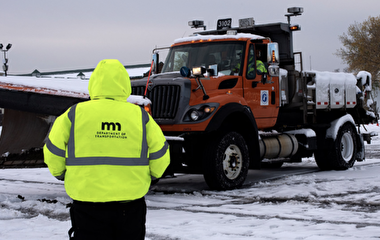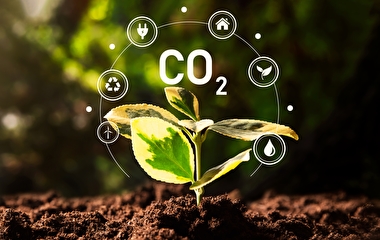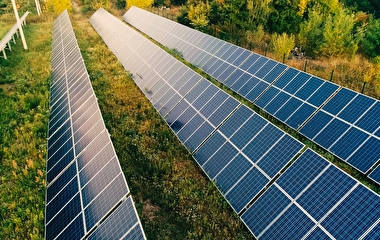
Earth is warming rapidly and will continue to do so if humans don’t act quickly to curb greenhouse gas emissions—including those from transportation. Jonathan Foley, executive director of nonprofit Project Drawdown, issued an urgent call to action at the opening session of this year’s CTS Transportation Research Conference, held virtually on November 4.
“Drawdown is the point at which greenhouse gas emissions stop going up, level off, then start to go down again,” Foley explained. “Gatherings like this one allow us to work together to determine what we can do to bend that curve—not only reducing emissions and addressing climate change but also building a better transportation infrastructure and a better world in the process.”
Foley said two main actions can help us achieve drawdown: bringing the sources of greenhouse gases to zero quickly, safely, and equitably, and supporting and protecting nature (primarily oceans and forests) to serve as carbon sinks that naturally remove greenhouse gases from the atmosphere. He also emphasized that the costs of addressing climate change are investments in the future.
“We don’t have to wait for new technologies to achieve drawdown—we have the solutions right now to do the job, and we can use new technologies to help us down the road,” Foley said. “This will cost trillions, but we will make that back many times over from energy efficiency and improved revenues alone—not even factoring [in] the expenses related to climate change.”
The key, according to Foley, will be dramatically scaling up the solutions we have right now in five areas: rules (laws, regulations, taxes, and incentives), capital (shifting investment and philanthropy), business practices (goals and standards), technology (focused innovation, research, and development), and behavior (shifting cultural and societal norms).
By scaling up our existing climate solutions while learning from each other, Foley concluded, we can address the challenge of climate change—and at the same time, take advantage of the opportunity to reimagine the way we live and “reboot the world.”
Following Foley’s presentation, Minnesota experts weighed in on what can be done at the state and local level to support drawdown.

“In Minnesota, transportation is the largest source of carbon emissions, and there are many other societal harms stemming from the ways we have invested in our transportation systems, including traffic crash deaths and racial inequality,” said Ashwat Narayanan, executive director of Our Streets Minneapolis. “We need to use every tool at our disposal to reduce emissions—and that means reducing demand on our transportation system by finding more efficient, equitable, and low-carbon ways to get around while rethinking our urban landscapes so we don’t have to travel as far to get the things we need.”
Determining where the “big ideas” of climate solutions intersect with people’s daily lives will be essential to accomplishing drawdown, according to Elise Harrington, an assistant professor with the U’s Humphrey School of Public Affairs. Climate change goals need to be tangible and make people feel like they can make a difference.
“Continuing to improve our understanding of the ways people experience our transportation system will allow us to better integrate people’s needs into our climate action planning,” Harrington said. “Transportation knits together so many parts of our lives—it is a great way to start getting more people involved in climate action at a local level to build momentum and launch discussions about what a future with [lower] carbon emissions looks like.”
Writer: Megan Tsai


